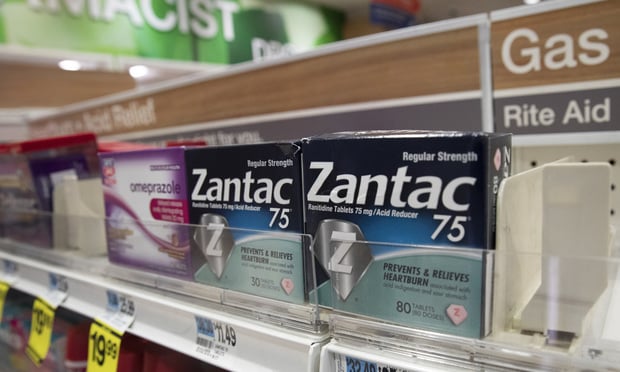Seizing on the Trump administration’s deregulation drive, corporate lobbyists arepushing to override state laws on ingredient-disclosure rules and warning labels, including landmark Californialegislation on potential cancer risks.
|The goal is to set a single federal law that could replace abarrage of state label requirements, making it easier forindustries ranging from chemical manufacturing to foodproduction.
|The Grocery ManufacturersAssociation is one of some 50 trade organizations backing aneffort for a national labeling law, saying a unified rule is neededinstead of a patchwork of differing state requirements. Theycontend that the chaos of state legislation has become too much forbusinesses to bear.
|“We ask for your support for a national solution to this growinglist of state labeling and disclosure requirements,” according to aletter seeking lawmakers as sponsors and signed by organizationssuch as the American Chemistry Council and the NationalCouncil of Farmer Cooperatives. “The time to establish a federal,science-based solution is now.”
|The trade groups, whose members include 3M Co., General MillsInc. and other top companies, argue that states “do not uniformlyhave the scientific capacity and robust infrastructure to ensureadherence to the highest standards of scientific integrity and riskanalysis,” according to the letter, which was viewed byBloomberg.
|Grandfathered law
The ACC circulated a document earlier this year to other tradegroups laying out its case and seeking support for a nationallabeling law. It suggested amending the Fair Packaging and LabelingAct to include what it called “minimum scientific standards” forlisting warnings or benefits. The document also discussed a“reform” of Proposition 65 to “require sound scientific basis forthe listing of substances.”
|Protecting that law was part of the agreement to update the40-year-old federal Toxic Substances ControlAct last year, which grandfathered in Proposition 65 and someregulations in other states, said Ansje Miller, director ofpolicy and partnerships at the Center for Environmental Health. “Now, withthis attempt, the chemical lobby is clearly breaking that promise,”she said.
|The California proposition, also known as the Safe DrinkingWater and Toxic Enforcement Act, took effect in 1986. It requiresthe state to maintain an updated list of chemicals known to causecancer or reproductive harm and for businesses to give “clear andreasonable” notice of exposure to those chemicals. That’s usuallyin the form of signs and labels.
|Beyond California
Critics say such warnings can be excessive. They point to acurrent lawsuit that seeks to add warnings about achemical in coffee. But proponents say the law has been successfulin alerting consumers to hazards like lead.
|Proposition 65 has served as a template for other states. Inrecent years, a number have enacted or weighed legislationregulating the use of certain chemicals in products. About 35states have passed 173 measures, and more than 100 other bills are underconsideration in two dozen states, according to environmentalhealth coalition Safer States.
||“Prop 65 is achieving its objectives” of limiting the number ofhazardous substances consumers encounter, said Martin Wolf,sustainability director at Seventh Generation household-productsmaker Seventh Generation.
|Laws like the recently passed cleaning-products labeling rule inCalifornia give them additional information, he said. “There’s aconsumer demand for that disclosure,” he said. “The consumer needsto be the final arbiter of the level of risk they willtolerate.”
|The California rules signed into law last month contain thestrictest requirements in the country for listing ingredients incleaning products, a measure opposed by the chemistry council andgrocery association. New York is hammering out a similarmeasure.
|Such actions can stymie consumers, said Claire Parker, aspokeswoman for a group of businesses that is forming called theCoalition for Accurate Product Labels.
|“The criteria and rationale for these initiatives is notconsistent, threatening to leave consumers and retailers even moreconfused about what is and is not safe,” Parker said in an emailedstatement. “Several groups have had discussions to explore theneed for federal legislation establishing science-based, uniform,national standards for government-mandated ingredient disclosureand warning label programs.”
|She cited a recent Ninth Circuit Court of Appeals decisionblocking a San Francisco law that required health warnings on sodaadvertisements, as well as an editorial in the LosAngeles Times warning that Prop 65 labels that aren’t supported byresearch can be counterproductive and dangerous.
|Federal standards
The passage last year of the Environmental Protection Agency’supdated toxics law limits states’ abilities to enact newregulations, and instead promotes a unified federal system.
|Efforts to override state disclosure requirements for consumerproducts come on the heels of a battle last year over whether torequire labels of genetically modified ingredients in food.Industry groups sought a national law that would supersedeindividual state mandates such as Vermont’s.
|The final law signed last year makes the information availablevia QR codes or 800 numbers but doesn’t require on-packagelabels.
|This new push for a federal standard fits right in with theTrump administration’s agenda, according to Daniel Rosenberg, seniorattorney at the Natural Resources Defense Council.
|“The chemical manufacturers have already taken control of theEPA,” Rosenberg said. “Now they want to take away the public’sright to know about dangerous chemicals in products by preventingstates from informing citizens.”
|Copyright 2018 Bloomberg. All rightsreserved. This material may not be published, broadcast, rewritten,or redistributed.
Complete your profile to continue reading and get FREE access to BenefitsPRO, part of your ALM digital membership.
Your access to unlimited BenefitsPRO content isn’t changing.
Once you are an ALM digital member, you’ll receive:
- Critical BenefitsPRO information including cutting edge post-reform success strategies, access to educational webcasts and videos, resources from industry leaders, and informative Newsletters.
- Exclusive discounts on ALM, BenefitsPRO magazine and BenefitsPRO.com events
- Access to other award-winning ALM websites including ThinkAdvisor.com and Law.com
Already have an account? Sign In
© 2024 ALM Global, LLC, All Rights Reserved. Request academic re-use from www.copyright.com. All other uses, submit a request to [email protected]. For more information visit Asset & Logo Licensing.








